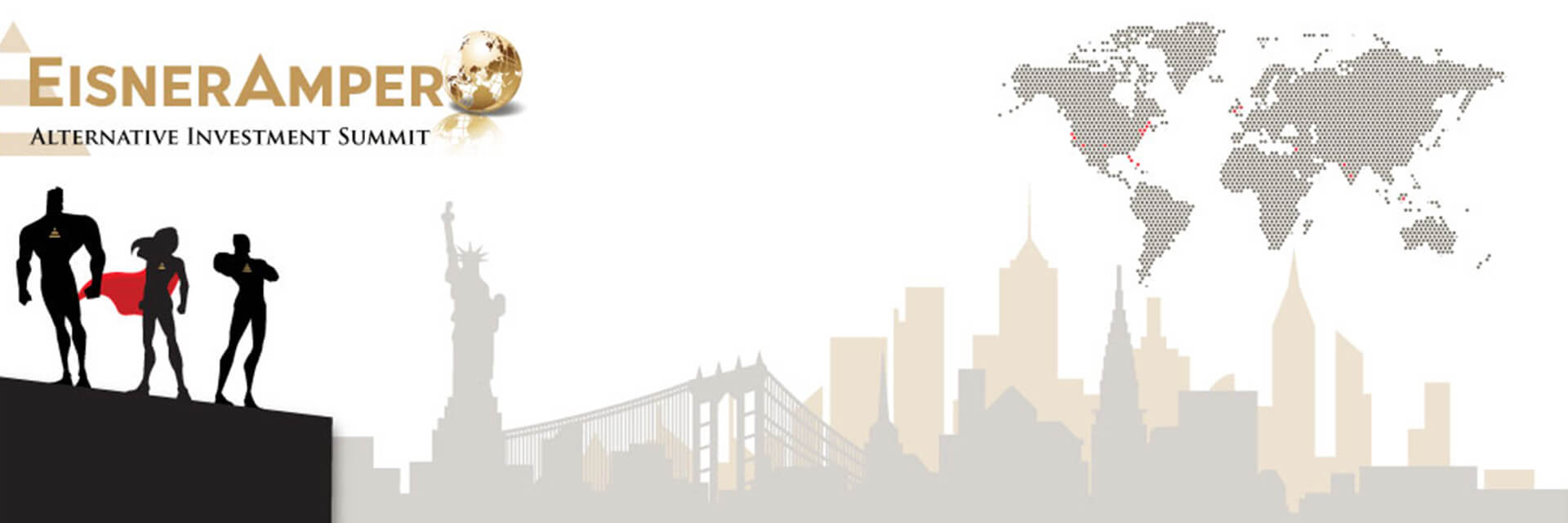
Hedge Fund Market Outlook
- Published
- Jul 31, 2018
- Share
The U.S. economy is roaring: Are we nearing full capacity or a fully valued market? At the EisnerAmper Alternative Investment Summit, a panel of hedge fund experts including Peter Duffy of Penn Capital, Harry Lengsfield of KLS Diversified Asset Management and Ned Oakley of Shenkman Capital discussed investment opportunities, concerns, and their outlook on an aging bull market.
Overall, the global economy is in much better shape now than it was ten years ago. Both established and emerging markets should remain strong in 2018 as the U.S. tax overhaul, fiscal stimulus and low and negative interest rates are driving a lot of global investing activities. While the Federal Reserve is in the middle of a tightening cycle, the market is seeing a spike in refinancing as companies look to lock in these lower rates for longer. Management teams for the high yield credit market feel good about growth and M&A as the market is seeing leverage buildup as multiples have increased to over six times leverage.
Interest rates and the impact on volatility
On investors’ minds during the Fed’s tightening cycle is the management of interest rates and its impact on volatility. If the Fed mismanages the inflation risk of raising rates too quickly, it can create volatility as it gets priced back in the market. And while Europe isn’t quite there yet, as the European Central Bank and other centralized banks implement policies to normalize rates, that could unwind the market as certain deals were done that shouldn’t necessarily be there because rates are negative.
Opportunities to deploy capital
Rates and volatility could increase, which can create different opportunities. As rates increase, bond prices will fall, coupled with uneconomic sellers such as ETFs who need to buy and sell at certain points in time based on the inflows and outflows of their product. This can drive bonds to trade below their fair value giving hedge fund managers opportunity to deploy capital. Historically, the cumulative default rate over a cycle is between 15%-20% -- so as the cycle does turn over, creditors in the direct lending space who aren’t equipped to restructure and hold securities loans through the bankruptcy process will be forced sellers. This can also create opportunities for managers to deploy capital as these loans are illiquid and are having to sell at a point in time when they’re stressed in the market.
Looking forward, the Fed’s and other central banks’ policies regarding rising interest rates, rolling doubts about volatility, and inflation risk will effect U.S. and global investing activity. It wouldn’t come as a surprise to the panelists if market corrections and the economic cycle turns in the next two-to-four years.
EisnerAmper would like to thank the panelists for their time and insights.
To check out our blog series from each panel from the EisnerAmper 3rd Annual Alternative Investment Summit, please click below.
Contact EisnerAmper
If you have any questions, we'd like to hear from you.
Receive the latest business insights, analysis, and perspectives from EisnerAmper professionals.









